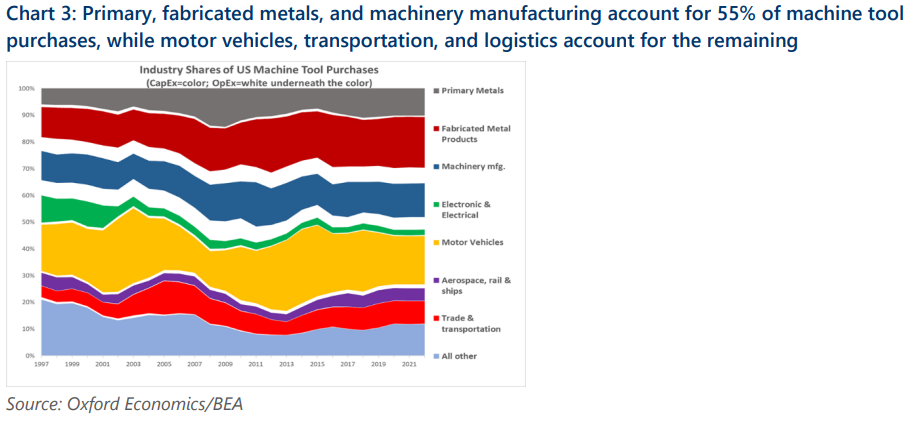Machine tools boosted by US fiscal policies and tech spending
The US machine tool industry has navigated through volatile markets in recent years. 2023 has proven to be a year of stabilisation. While the number of new orders has come off its high point, they remain well above pre-pandemic levels, with producer inventories now reflecting a more normal operating environment.
What you will learn:
- Policy changes and secular trends are lifting the prospects for the US machine tool industry. The former includes fiscal spending on infrastructure and incentives to underpin demand for clean energy, while the latter involves manufacturers’ moves to improve their product portfolio, with greater production efficiency.
- A key factor is the strong demand emanating from the cluster of industries that purchase the bulk of machine tool products, such as motor vehicles, aerospace, electronics, electrical equipment, and batteries.
- Companies within these sectors have responded to changes in demand and domestic policy by lifting their own investment spending, including for machine tools.
- Machine tools are therefore a prime example of a sector boosted by policy changes and technology upheaval via their impacts on their largest customer markets.

Tags:
Related Posts

Post
The sector-by-sector consequences of mass deportations in the US
The sectors most exposed to mass deportations are construction, agriculture, parts of manufacturing and several service sectors.
Find Out More
Post
Trump tariff turbulence threatens global industrial landscape
Trump has moved swiftly to advance a trade agenda that goes beyond what was promised in the campaign. This will have a major impact on global industrial prospects.
Find Out More
Post
Europe’s defence splurge will help industry – but by how much?
Our baseline forecast now assumes that European defence spending will rise to 3% of GDP by the end of the decade. This could give a growth boost to Europe's ailing industrial sector.
Find Out More